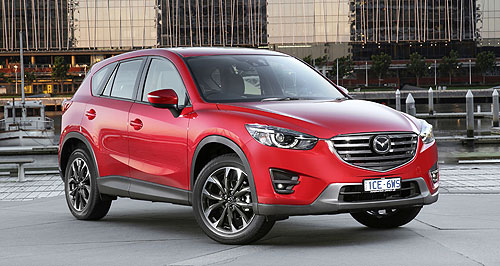Make / Model Search
News - VFACTS - Sales 2016SUVs set to topple passenger carsMoving on: After ruling the roost for more than a century, passenger cars are likely to take a back to seat to SUVs in the Australian market this year. Changing of the guard as SUVs pull out to overtake traditional cars5 Jan 2017 TRADITIONAL passenger cars will to be overtaken by family-friendly SUVs in the Australian new-vehicle market this year if current trends continue. VFACTS sales figures for 2016 show passenger car volumes slumped 5.7 per cent, to 486,257 units for the calendar year, while SUV sales jumped 8.0 per cent, to 441,017 vehicles. This continues the trend of the past two decades as consumers switch to high-riding wagons from conventional sedans, hatchbacks and station wagons. The recent death of locally built sedans such as the Ford Falcon and Holden Cruze is expected to hasten this slide, as will the demise of the Holden Commodore, Toyota Camry and Toyota Aurion by the fourth quarter of 2017. Assuming passenger car sales slip by the same percentage as last year, the 2017 tally could be about 450,000 units, while SUV sales could grow to about 470,000. The imminent advent of new SUVs such as Toyota’s C-HR small wagon – the Japanese giant’s first vehicle in the fast-growing baby SUV class – is expected to help maintain the SUV sales momentum in 2017. Just a decade ago, SUVs accounted for 170,000 sales in Australia. Back then, the choice was much smaller, and many of the top-sellers were heavy-duty 4x4s such as the Toyota LandCruiser and Mitsubishi Pajero. So-called “soft-roaders” – light-duty wagons built on passenger-car platforms – have since transformed the SUV market, with vehicles such as Mazda’s CX-5 rising to the top of the sales charts. SUV sales have more than doubled in that decade, although the definition of SUV has become increasingly rubbery. In another trend that is expecting to continue in 2017, business buyers are taking an increasingly large chunk of the vehicle market and could overtake private purchasers. While 35,226 fewer private buyers signed on the dotted line for a new vehicle last year – down 5.8 per cent – business sales went up 13 per cent or 54,217 vehicles. This trend reflects the growth in light truck sales to tradies and other small-business ABN holders. It also explains how Toyota’s HiLux topped the sales charts for the first time last year. Two other one-tonne utes also made the top 10 – the Ford Ranger and Mitsubishi Triton – while others such as the Holden Colorado were not far away. Another burgeoning trend is the move away from diesel in passenger cars. While diesel is holding strong in the SUV and light commercial vehicle segments, private passenger car buyers are favouring petrol again after flirting with oil burners a few years ago. Diesel passenger car sales fell from 23,847 in 2015 to 20,482 last year, mainly because of cheap fuel prices and increasingly efficient petrol engines on the market. Diesel is not yet being replaced by electricity, though, with just 282 electric vehicles – mainly plug-in hybrids – sold in Australia in the 12 months to the end of December.  Read more |
Click to shareVFACTS articlesResearch VFACTS Motor industry news |











Facebook Twitter Instagram